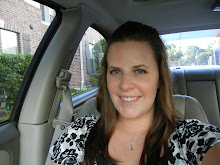Chapter 1 "Why Read?"
I love reading. There is something about picking up a good novel and escaping in it that is just so healing and relaxing for me. As I came across the term bibliotherapy for the first time in this chapter I realized, that's me. I wasn't always such an engaged reader though. In middle school and high school the pleasure of reading was taken away from me. How I ever passed exams on Shakespeare's work is still a puzzle to me. Still to this day, if someone gives me a huge, thick, tiny printed novel I get a headache immediately. Even looking at a dictionary gives me a headache because it looks like the textbook I had in high school over Shakespeare's work. How sad is that? Luckily though, not all of the books I enjoyed were thrown at me with an assignment to go with it, and most of them were in today's English. When I teach, I am going to share with my students what books I read for pleasure at home in my free time and briefly give a summary over them. I think it's important that children know they're learning to read for a life-long purpose.
Chapter 2 "What is a Good Book?"
In class I appreciated how Dr. Saldana explained how everyone judges a book differently, and how he respects his students' choices on what books they like to read. And also, therefore we as future educators should do the same. It goes along with the quote on page 11:
"People often don't see eye-to-eye when it comes to judging whether a book is worthwhile because good book is a common phrase with two different definitions, one based on quality and the other based on taste."
As a teacher, I am going to have to get over reading book reports on my least favorite topics, like sports and science fiction, so that my students can choose what they want to read which would make the assignments on book reports and comprehension more enjoyable for them. I love watching sports and science fiction movies, but for some reason reading about them bores me to tears! If it keeps my students reading though, then more power to them! I will get over it!
Chapter 3 "How to Recognize a Well-Written Book"
I liked how in the last section the authors say that "...in good books, the story is primary and the lessons are secondary" (pg 26). This is so important with youngsters. They will be more inclined to listen to a story and get a lesson out of it later than have a lesson thrown at them right away.
I also liked the dialogue in the section above on the conversation about why a couple didn't baptize their babies. I chuckled a little after reading it, and I agree with the authors that "...Unexpected insights add depth and credibility to the story while providing the reader with recognition and connections" (26). Quite frequently I have to put down a book I'm reading to laugh out loud for a minute. It's part of what makes reading so much fun.
Chapter 4 "How to Recognize a Well-Illustrated Book"
I think the art work in children's books is some of the best work ever. As kids, we don't really take it that into account. When I read to kids I babysit or to the preschoolers I teach, I sometimes find myself staring at the pictures more than the children. All the detail that I find is just so cool. This chapter goes into detail about certain books and what type of art is used, but honestly it doesn't really make a difference to me. I never got into anything art related because it is not a gift of mine! I'm sure children whose fine motor skills aren't fully developed yet can draw better than me. I am that bad...
Chapter 5 "Children's Books: History and Trends"
I was so surprised to find that most of my favorite children's books were written back in the 1600s and 1700s! I guess I had never thought of it before. I'm glad this textbook lists all the Newbery and Caldecott awarded books. I think it will come in handy for when I run my own classroom!

No comments:
Post a Comment